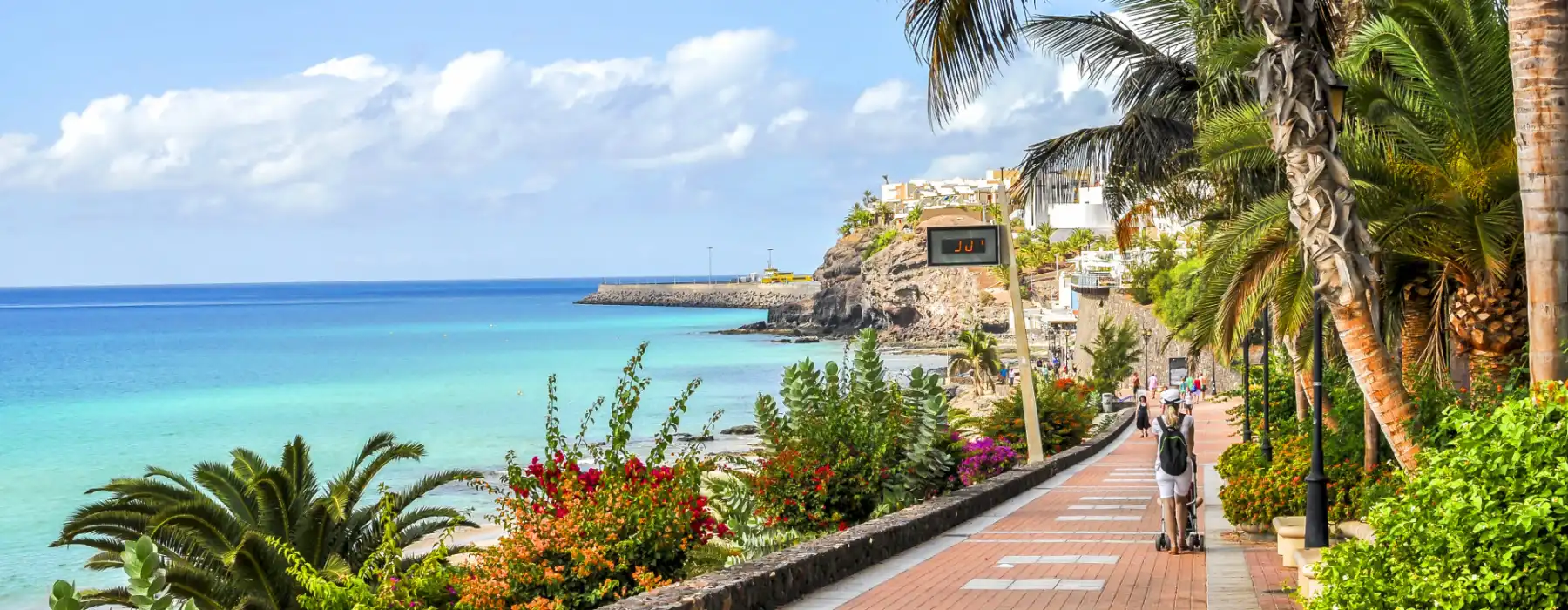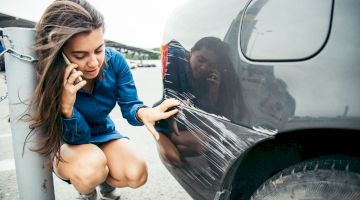- Online car hire since 2005

Car hire Fuerteventura
Save time and money. We compare the offers of car rental companies in Fuerteventura on your behalf.
- Free cancellation Up to 48 hours prior to the scheduled pick up time
- Best price guarantee Have you found a better price? Let us know and we will make you a better offer.
- 24000+ pick-up locations Locations around the world

Car hire Fuerteventura
EasyTerra Car Hire Fuerteventura is an independent car hire comparison site. Our system compares prices from well-known car hire companies so as a customer you can always book your hire car through us at a competitive rate.
Car rental offers in Fuerteventura
Whether you're looking for a small rental car or a station wagon for the entire family, we will always have a suitable vehicle for the lowest price. Below are some examples from our selection in Fuerteventura.

-
Goldcar From£ 10 /day

-
Goldcar From£ 10 /day -
TopCar From£ 13 /day -
Goldcar Key'n Go From£ 24 /day

-
Budget From£ 13 /day -
Turisprime From£ 13 /day -
Avis From£ 15 /day

-
Goldcar From£ 10 /day -
Gobycar From£ 12 /day -
TopCar From£ 13 /day

-
Turisprime From£ 10 /day -
Budget From£ 11 /day -
Dollar Rent a Car From£ 12 /day

-
Budget From£ 13 /day -
Turisprime From£ 13 /day -
Thrifty From£ 13 /day

-
Turisprime From£ 10 /day -
Budget From£ 11 /day -
Goldcar From£ 11 /day

-
Goldcar From£ 11 /day

-
Gobycar From£ 13 /day -
TopCar From£ 15 /day

-
Goldcar From£ 11 /day -
Dollar Rent a Car From£ 12 /day -
Thrifty From£ 13 /day

-
Turisprime From£ 11 /day -
Budget From£ 12 /day -
Goldcar From£ 13 /day

-
Thrifty From£ 14 /day -
Dollar Rent a Car From£ 14 /day -
TopCar From£ 17 /day

-
Turisprime From£ 11 /day -
Budget From£ 12 /day -
Avis From£ 13 /day

-
Turisprime From£ 12 /day -
Budget From£ 12 /day -
Avis From£ 13 /day

-
Gobycar From£ 14 /day -
Dollar Rent a Car From£ 16 /day -
Thrifty From£ 18 /day

-
Turisprime From£ 12 /day -
Budget From£ 12 /day -
Avis From£ 13 /day

-
Flizzr From£ 12 /day -
Sixt From£ 14 /day -
TopCar From£ 18 /day

-
Budget From£ 14 /day -
Turisprime From£ 14 /day -
Avis From£ 16 /day

-
Flizzr From£ 13 /day -
Sixt From£ 14 /day -
Gobycar From£ 15 /day

-
Flizzr From£ 13 /day -
Sixt From£ 17 /day -
Keddy By Europcar From£ 41 /day

-
Thrifty From£ 15 /day -
Dollar Rent a Car From£ 16 /day -
TopCar From£ 21 /day

-
Turisprime From£ 13 /day -
Budget From£ 14 /day -
Avis From£ 16 /day

-
Goldcar From£ 14 /day -
TopCar From£ 17 /day -
Goldcar Key'n Go From£ 29 /day

-
Gobycar From£ 16 /day -
TopCar From£ 26 /day -
Goldcar Key'n Go From£ 30 /day

-
Keddy By Europcar From£ 14 /day -
Sixt From£ 15 /day -
Europcar From£ 16 /day

-
Budget From£ 14 /day -
TopCar From£ 17 /day

-
Thrifty From£ 16 /day -
Dollar Rent a Car From£ 16 /day -
Hertz From£ 20 /day

-
Keddy By Europcar From£ 15 /day -
Europcar From£ 18 /day -
Budget From£ 20 /day

-
Flizzr From£ 16 /day -
Sixt From£ 19 /day

-
Keddy By Europcar From£ 17 /day -
Europcar From£ 19 /day -
TopCar From£ 23 /day

-
TopCar From£ 17 /day

-
Budget From£ 18 /day -
Avis From£ 20 /day -
TopCar From£ 23 /day

-
TopCar From£ 17 /day

-
TopCar From£ 17 /day

-
TopCar From£ 18 /day

-
TopCar From£ 17 /day

-
TopCar From£ 22 /day

-
TopCar From£ 22 /day

-
TopCar From£ 22 /day

-
TopCar From£ 22 /day

-
Budget From£ 22 /day -
Avis From£ 24 /day

-
Budget From£ 22 /day -
Avis From£ 23 /day

-
TopCar From£ 22 /day

-
TopCar From£ 23 /day

-
TopCar From£ 24 /day

-
Sixt From£ 25 /day -
Flizzr From£ 30 /day

-
Budget From£ 26 /day -
TopCar From£ 29 /day -
Sixt From£ 46 /day

-
Budget From£ 27 /day -
Sixt From£ 54 /day

-
Budget From£ 28 /day -
TopCar From£ 30 /day -
Avis From£ 33 /day

-
Sixt From£ 28 /day

-
Budget From£ 28 /day -
Avis From£ 31 /day -
TopCar From£ 32 /day

-
Budget From£ 28 /day -
Avis From£ 32 /day -
TopCar From£ 32 /day

-
Avis From£ 29 /day

-
Dollar Rent a Car From£ 32 /day -
Thrifty From£ 33 /day

-
TopCar From£ 29 /day

-
TopCar From£ 29 /day

-
TopCar From£ 32 /day

-
TopCar From£ 35 /day

-
TopCar From£ 37 /day

-
TopCar From£ 38 /day

-
Sixt From£ 43 /day

-
Sixt From£ 38 /day

-
TopCar From£ 40 /day

-
TopCar From£ 18 /day

-
TopCar From£ 19 /day

-
TopCar From£ 21 /day

-
TopCar From£ 24 /day

-
TopCar From£ 27 /day

-
TopCar From£ 24 /day

-
TopCar From£ 29 /day

-
TopCar From£ 34 /day

-
Budget From£ 34 /day -
Avis From£ 37 /day -
Dollar Rent a Car From£ 48 /day

-
Budget From£ 34 /day -
Avis From£ 37 /day -
Dollar Rent a Car From£ 53 /day

-
Dollar Rent a Car From£ 42 /day -
Thrifty From£ 44 /day -
Gobycar From£ 44 /day

-
TopCar From£ 44 /day

-
TopCar From£ 44 /day

-
TopCar From£ 44 /day

-
Gobycar From£ 45 /day -
Thrifty From£ 45 /day -
Dollar Rent a Car From£ 45 /day

-
TopCar From£ 49 /day

-
Hertz From£ 54 /day

-
TopCar From£ 18 /day

-
Budget From£ 20 /day -
Avis From£ 23 /day -
TopCar From£ 27 /day

-
Budget From£ 21 /day -
Avis From£ 24 /day -
TopCar From£ 29 /day

-
TopCar From£ 25 /day

-
TopCar From£ 32 /day

-
TopCar From£ 30 /day

-
TopCar From£ 32 /day

-
TopCar From£ 41 /day

-
TopCar From£ 41 /day

-
Flizzr From£ 13 /day -
Sixt From£ 17 /day -
Keddy By Europcar From£ 45 /day

-
Goldcar From£ 14 /day -
TopCar From£ 15 /day -
Goldcar Key'n Go From£ 29 /day

-
Budget From£ 16 /day -
Keddy By Europcar From£ 17 /day -
Avis From£ 18 /day

-
Turisprime From£ 14 /day -
Budget From£ 15 /day -
Avis From£ 16 /day

-
Dollar Rent a Car From£ 14 /day -
Thrifty From£ 15 /day -
Hertz From£ 16 /day

-
Keddy By Europcar From£ 17 /day -
Europcar From£ 20 /day -
Sixt From£ 22 /day

-
Budget From£ 15 /day -
Keddy By Europcar From£ 15 /day -
Avis From£ 17 /day

-
Flizzr From£ 15 /day -
Sixt From£ 41 /day

-
TopCar From£ 19 /day

-
TopCar From£ 17 /day

-
TopCar From£ 27 /day
Useful tips for a well-prepared trip
Which insurance should I choose, and what's the deal with the deposit? Read our articles with useful information and tips to ensure you choose the right rental car for you.
Car rental locations in Fuerteventura
EasyTerra Car Hire compares rental car rates at the following locations
Location information for Fuerteventura
Most popular car hire locations in Fuerteventura
Introduction
Fuerteventura is the second largest Canary Island (which belong to Spain). The name means 'powerful wind', and the island's climate is different from that on the other islands. There is often a chilly wind (Gota Fria), alternating with a hot wind from the Sahara (Calima). That wind makes the island a paradise for surfers. There are beautiful beaches, but the interior is rugged, barren and dry.
Population
The island has only 45,000 inhabitants, which makes it the most sparsely populated of the Canary Islands. More than half of the people live in the island's capital Puerto del Rosario (which, incidentally, is not particularly attractive) on the east coast.
Location
Fuerteventura is about 100 kilometres long and 5 - 30 kilometres wide. It is located at less than 100 kilometres from the coast of Morocco. The island is located to the east of Gran Canaria and to the south-west of Lanzarote. The main tourist locations are Corralejo in the north and Morro del Jable in the southern land tip Jandia. Straight to the north of Corralejo lies the small island of Los Lobos with a 127 metre high volcano. Central on the island lies the old capital Betancuria, the oldest city on the island with a beautiful cathedral, the Iglesia Santa Maria. The archaeological and ethnographic museum (Museu Arqueologico y Etnografico) is also well worth a visit.
Economy
Like the other Canary Islands, Fuerteventura also depends largely on tourism. In addition, livestock is an important pillar, which can clearly be seen on the island: there are goats everywhere that are bred for their meat and milk. Also, tomatoes and potatoes are grown. The port of Puerto del Sosario plays a (modest) role in the local economy.
Airports
The airport of Fuerteventura is located at only five kilometers to the south of the capital Puerto del Rosario, near the tourist centre of Caleta de Fuste. The airport is situated on the main road FV-1. On a column near the taxi stand there are fixed rates for various destinations on the island. There are shuttle buses to the capital, Caleta de Fuste and Morro del Jable.
It is likely that within a few years a second airport will be opened in the south of the island.
Public transport
Although public transport by bus has improved in recent years, it is still fairly limited. There are bus connections between the most important destinations and the capital, but they do not always follow the shortest route. It is nice if you want to sea the island in a relaxed way. You cannot always count on the official departure and arrival times. Ask the local population for the timetable of the buses.
There are plenty of taxis. It is a fairly cheap way to travel.
Traffic and Parking
The main road that runs from north to south via the capital is a good and fairly broad road. Some other main roads are good as well, but otherwise the roads on the island are paved with gravel or sand. The smaller roads go through the mountains, which means there are lots of curves. If you want to turn left on the main roads, you often need to position your car to the right and then cross the road. This way the traffic behind you can keep moving.
The road network is good. There are paved main roads and various categories of sandy roads. There is no motorway, but the main road connecting the north of the island to the south is a good road with one lane in each direction. You often drive in mountainous terrain with lots of curves, but the roads are wide enough for cars to pass each other. On smaller roads the horn is a handy tool to warn people coming from the other direction.
Parking is virtually nowhere a problem. Keep in mind that you are not allowed to park at curbs with a yellow or white line. A blue line means that you have to pay to park.
Hotels
Fuerteventura has a good supply of hotels and holiday cottages, but not for every budget. There are hardly any budget accommodations. There are no campsites, although in some places you are allowed to pitch your tent (ask on site!). Tourism on the island is not nearly as well developed as it is on, for instance, Gran Canaria. Holiday cottages are sometimes located in remote locations (but they are very beautiful!), so a rental car is a must. During peak season you have to book in advance.
External Sources
For more information about Fuerteventura, we recommend Google, and the following sources:
- Wikipedia, Fuerteventura
- Fuerteventura Turismo (Spanish, English and German)
Important up-to-date information for renting a car in Fuerteventura
| 🚙 Number of rental agencies | 18 |
| ⭐ Most popular car rental agency | Budget |
| 💰 Cheapest car rental company | Goldcar |
| 🏆 Best rated car rental agency | Dollar Rent a Car |
Practical information
-
CurrencyEuro
-
Driving directionRight
-
City speed limit50 km/h
-
Freeway speed limit90 km/h
-
LanguageSpanish
-
Popular car categoryEconomy
What most people want to know
The following questions and answers are a selection of the most popular questions. If you do not find the answer to your question, have a look at the Frequently Asked Questions page or contact us.
- Dollar Rent a Car
- TopCar
- Flizzr
- Gobycar
- Hertz
- Budget
- Goldcar Key'n Go
- Sixt
- Orlando Rent a Car
- Avis
- Keddy By Europcar
- Thrifty
- Turisprime
- Europcar
- Goldcar
- Rhodium Car Rental
- InterRent
- Enterprise


